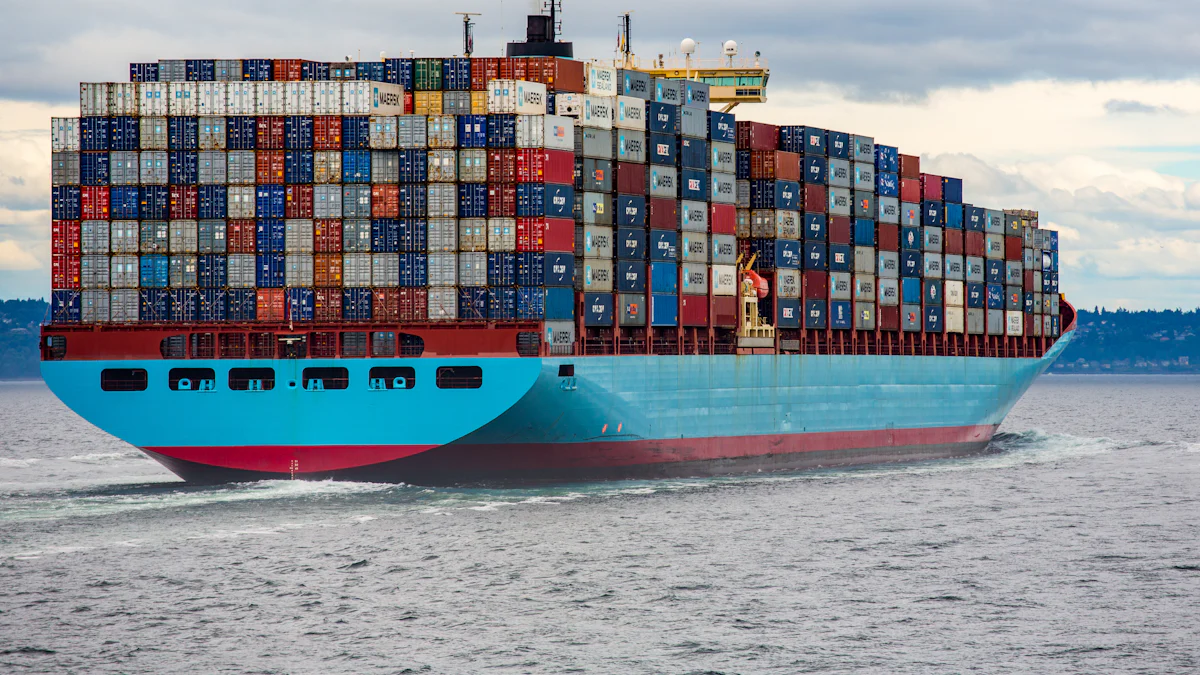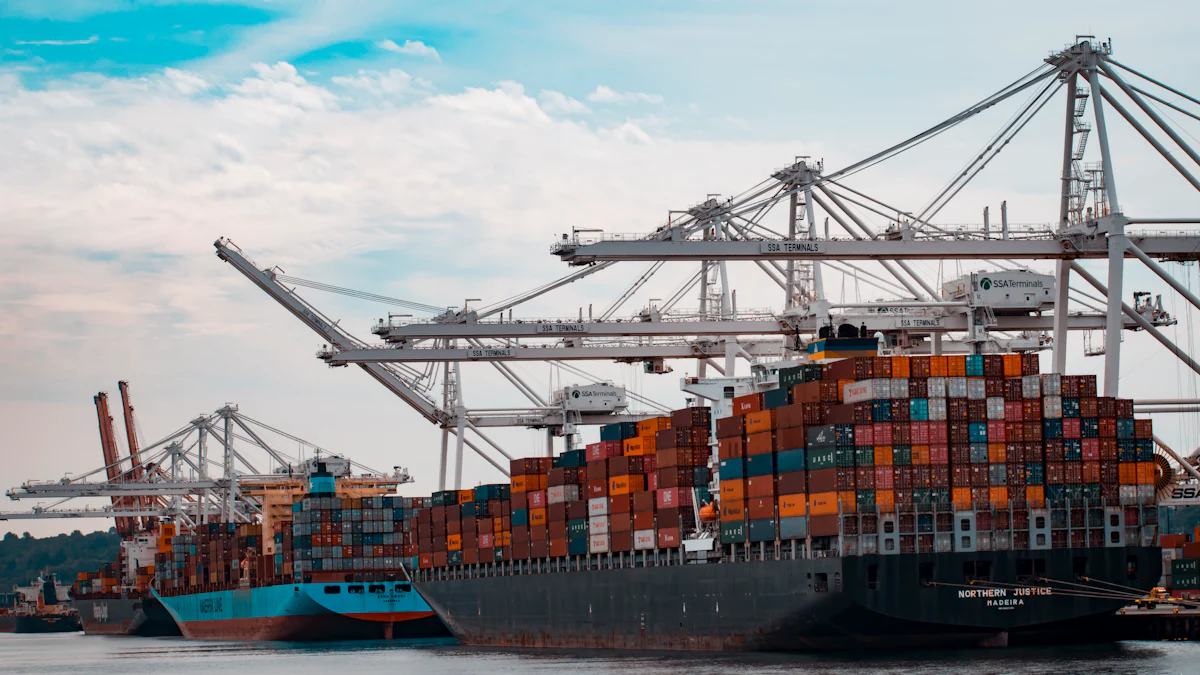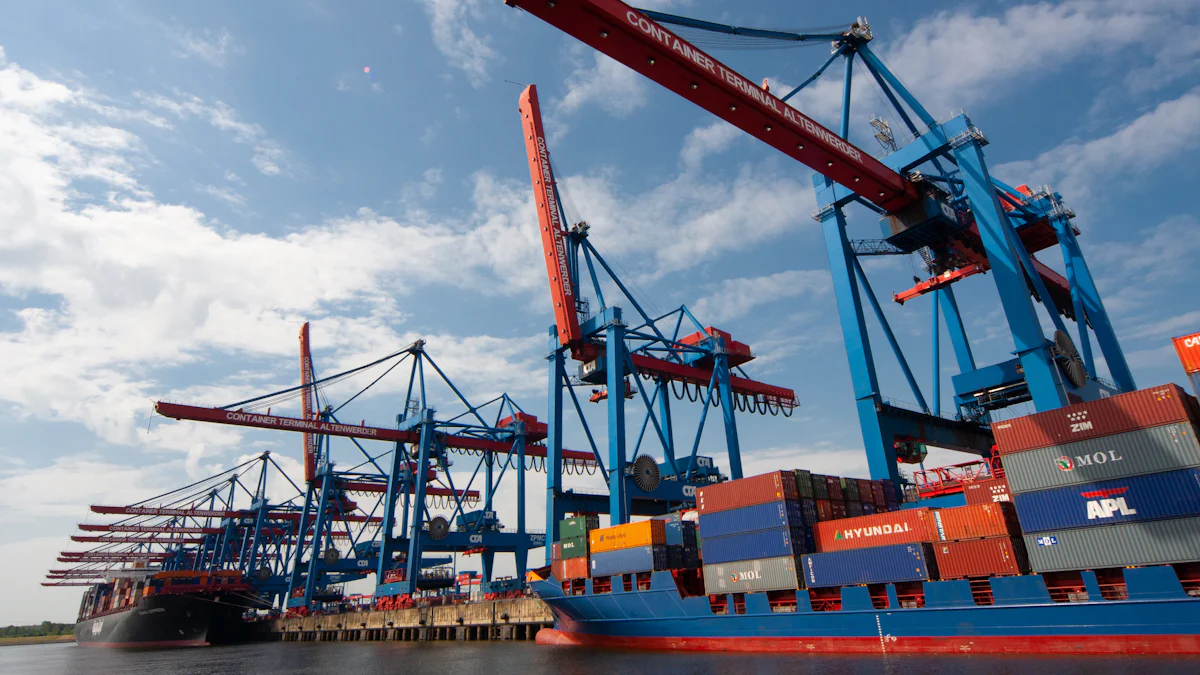Affordable Shipping Solutions from China to Vietnam Explained

The trade volume between China and Vietnam reached approximately $171.2 billion in 2023, highlighting the robust economic partnership between the two nations. This significant growth in trade has intensified the demand for cost-effective shipping solutions, allowing businesses to efficiently manage load transport from China to Vietnam and leverage Vietnam's thriving market. Elevated shipping costs often stem from factors such as transportation modes, cargo types, and customs duties. To mitigate these expenses, businesses must engage in strategic planning and partner with dependable logistics providers. Streamlined load transport from China to Vietnam not only enhances operational efficiency but also fosters sustainable growth in this highly competitive market.
Exploring Shipping Methods from Port of Shanghai to Vietnam

Sea Freight
Cost advantages for bulk shipments
Sea freight remains the most economical option for businesses managing large or heavy shipments. It offers significant savings compared to other shipping methods, especially for bulk cargo. For instance, shipping a 20ft container from Shanghai to Ho Chi Minh City typically costs between $1,200 and $1,500, while a 40ft container ranges from $1,800 to $2,400. Additional expenses, such as customs duties, documentation fees, and handling charges, may apply but are generally lower than those associated with air freight. Businesses seeking to reduce container shipping costs often prefer sea freight due to its affordability and scalability.
Estimated transit times and when to use sea freight
Transit times for sea freight vary based on the route and shipment type. Full Container Load (FCL) shipments from Shanghai to Ho Chi Minh City take approximately 8 days, while Less than Container Load (LCL) shipments may require up to 14 days. Sea freight is ideal for non-urgent deliveries, particularly for industries like electronics and FMCG, where cost efficiency outweighs speed. Companies aiming to reduce shipping costs while transporting large volumes often rely on this method.
Air Freight
Faster delivery for urgent shipments
Air freight provides unmatched speed, making it the preferred choice for urgent shipments. Delivery times range from 1 to 3 days for express services and 3 to 7 days for regular options. This method is particularly beneficial for high-value or time-sensitive goods, such as medical supplies or semiconductor materials. Although air freight incurs higher costs, its efficiency justifies the expense for businesses prioritizing quick delivery.
Cost comparison with other methods
Air freight costs significantly more than sea freight. For example, while sea freight offers low-cost solutions for bulk shipments, air freight caters to smaller, high-value loads at a premium price. Despite the higher freight costs, businesses can achieve cheaper shipping from China by opting for economy air freight services, which balance cost and speed effectively.
Rail Freight with JUSDA Vietnam, China-Europe Express Rail
A balance between cost and speed
Rail freight bridges the gap between sea and air freight, offering a balance of cost and transit time. JUSDA’s Vietnam-China-Europe Railway Express provides a reliable alternative for businesses seeking moderate shipping expenses. This method is particularly advantageous for industries requiring faster delivery than sea freight but at a lower cost than air freight.
Availability and limitations for China-Vietnam routes
Rail freight services, such as the China-Europe Express Rail, cater to diverse cargo types, including electronics and clothing. However, its availability for direct China-Vietnam routes may vary. JUSDA Vietnam’s expertise in rail freight ensures efficient load transport from China to Vietnam, leveraging its extensive network and advanced logistics solutions. Businesses can further reduce container shipping costs by utilizing JUSDA’s consolidation services, which combine smaller shipments into a single container.
Express Couriers
Best for small, high-value shipments
Express couriers offer an ideal solution for businesses shipping small, high-value goods from China to Vietnam. These services prioritize speed and reliability, ensuring that shipments reach their destination promptly. Delivery times can be as short as 8–10 hours, making express shipping the fastest option available. This method simplifies the logistics process by including customs duties in the service, which reduces the time spent on customs clearance. Goods travel directly from the supplier’s factory to the buyer’s location, streamlining the entire process.
Key advantages of express couriers include:
Door-to-door convenience
Minimal effort required on the shipper's part
For businesses seeking cheaper shipping from China for high-value items, express couriers provide unmatched efficiency and convenience.
Comparing major courier services (e.g., DHL, FedEx)
When choosing an express courier, businesses often compare options like DHL and FedEx based on delivery times and costs. DHL typically delivers shipments within 1–2 days, while FedEx takes 2–3 days on average. In terms of costs, FedEx offers a more economical option, with an average shipment cost of approximately $6 and international shipping costs around $37. DHL, on the other hand, charges about $12 per shipment, with international shipping costs averaging $48.
The choice between these couriers depends on the specific needs of the shipment. DHL’s faster delivery times may justify the higher costs for urgent shipments. FedEx, however, provides a cost-effective alternative for businesses prioritizing affordability. Both services excel in handling small, high-value shipments, ensuring secure and timely delivery.
Express couriers play a crucial role in load transport from China to Vietnam, particularly for businesses requiring swift and reliable solutions. Their ability to combine speed, convenience, and efficiency makes them indispensable for high-value goods.
Optimizing Packaging and Consolidating Shipments to Reduce Container Shipping Costs

Reducing Packaging Costs
Using lightweight and durable materials
Lightweight and durable materials offer significant advantages in international shipping. They reduce the weight of shipments, which lowers transportation costs and minimizes carbon emissions. Businesses can transport more packages in a single container, maximizing space utilization and reducing the number of trips required. This approach not only decreases dependence on fossil fuels but also enhances the manageability of packaging, making it less prone to damage during handling and storage. By adopting lightweight materials, companies can achieve cheaper shipping from China while maintaining the integrity of their goods.
Avoiding overpacking to save space
Overpacking wastes valuable container space and increases shipping costs unnecessarily. Efficient packing strategies, such as modular packaging designs, help maximize space utilization within containers. Advanced packing software can visualize layouts, ensuring optimal use of available space. Collaborating with suppliers to standardize packaging sizes further enhances efficiency. For example, a U.S. manufacturer partnered with Dimerco to consolidate shipments from multiple suppliers, reducing container shipping costs and improving delivery times. These practices demonstrate how strategic packaging can reduce shipping costs effectively.
Consolidating Shipments
Combining smaller shipments into one
Consolidating smaller shipments into a single container significantly reduces overall transportation expenses. Businesses benefit from lower per-unit transportation costs by maximizing space utilization in each container. Fewer trips are required, which decreases fuel consumption and operational costs. This strategy is particularly effective for load transport from China to Vietnam, where combining shipments ensures cost efficiency and streamlined logistics.
Benefits of working with JUSDA for consolidation
JUSDA offers unparalleled expertise in shipment consolidation, enabling businesses to reduce container shipping costs through economies of scale. By combining multiple shipments into one large cargo, JUSDA helps clients share transportation costs, further enhancing savings. The company’s advanced logistics solutions ensure optimal space utilization, reducing the cost per unit of goods transported. JUSDA’s consolidation services not only lower overall transportation expenses but also improve operational efficiency, making it a trusted partner for businesses shipping from China.
Choosing Reliable Freight Forwarders to Reduce Shipping Costs
Key Factors to Consider
Reputation and experience in China-Vietnam shipping
Selecting the right freight forwarders is crucial for businesses aiming to reduce container shipping costs. A freight forwarder with extensive experience in China-Vietnam trade understands the unique challenges of this route. Their familiarity with customs procedures and regional regulations ensures smoother operations and fewer delays. Companies should also evaluate the reputation of the forwarder by reviewing client testimonials and industry certifications. A well-established track record reflects reliability and expertise in handling complex logistics.
Range of services offered (e.g., customs clearance, tracking)
The range of services provided by a freight forwarder significantly impacts shipping expenses. Businesses should prioritize forwarders offering comprehensive solutions, such as:
Free pick-up from supplier factories.
Consolidation of goods to save costs.
Assistance with export and import customs clearance.
Real-time cargo tracking for transparency.
These services streamline the logistics process and help reduce container shipping costs. For instance, JUSDA’s advanced tracking systems and customs clearance expertise ensure efficient load transport from China to Vietnam, minimizing delays and additional costs.
Comparing Rates Across Carriers
Requesting quotes from multiple providers
Comparing rates across carriers is essential for identifying cost-effective options. Businesses should request detailed quotes from multiple providers, considering factors such as the nature of goods, weight, and dimensions of the cargo. Additionally, the chosen mode of transportation—whether sea, air, or rail—can influence costs significantly. For example, ocean freight is generally cheaper than air freight, making it ideal for bulk shipments. Evaluating these variables helps businesses make informed decisions when shipping from China.
Evaluating cost versus service quality
Balancing cost and service quality is critical when selecting a carrier. While lower costs may seem appealing, businesses must also assess service aspects like delivery speed, reliability, and customer support. Investing in a slightly higher-priced service often results in better tracking capabilities and fewer shipping issues. For instance, carriers with strong networks and expertise in customs procedures can ensure timely delivery, reducing overall shipping expenses. Businesses should weigh these trade-offs carefully to achieve both affordability and efficiency.
Navigating Customs and Documentation Requirements for Shipping from Port of Shanghai to Vietnam
Essential Documentation
Commercial invoices, packing lists, and bills of lading
Shipping from China to Vietnam requires meticulous preparation of essential documents to ensure smooth customs clearance. Key documents include:
DHL Waybill or Label: Attach a fully completed waybill to each shipment piece.
Commercial or Pro Forma Invoice: This document is vital for assessing duties and taxes.
Bill of Lading: It serves as proof of receipt and shipment of goods.
Certificate of Origin: This validates the manufacturing country of the goods.
Packing List: It provides a detailed list of all items being shipped.
Test or Inspection Certificates: These are mandatory for specific goods, such as pharmaceuticals.
Accurate preparation of these documents ensures compliance with customs procedures and minimizes the risk of delays.
Certificates of origin and other required documents
The Certificate of Origin plays a critical role in determining applicable tariffs and duties. Additional documents, such as inspection certificates for regulated goods, may also be necessary. Businesses must verify the specific requirements for their cargo type to avoid complications during customs clearance.
Avoiding Delays and Extra Costs
Ensuring accurate and complete paperwork
Incomplete or inaccurate paperwork often leads to shipment delays and increased costs. Businesses can mitigate these risks by:
Double-checking all forms to ensure accuracy.
Familiarizing themselves with product classifications to avoid misclassification.
Utilizing digital tools to streamline documentation processes.
Staying informed about the latest customs regulations in both China and Vietnam is equally important. Regular updates help businesses maintain compliance and avoid unnecessary penalties.
Working with JUSDA’s self-owned customs team for smooth clearance
JUSDA’s self-owned customs team offers unparalleled expertise in navigating complex customs procedures. Their strong relationships with customs authorities in both countries ensure efficient clearance processes. By leveraging JUSDA’s services, businesses can reduce container shipping costs and avoid delays caused by documentation errors. JUSDA’s multilingual capabilities further enhance communication, making it easier to address any issues that arise during the clearance process.

JUSDA Solutions
To provide you with professional solutions and quotations.
Tip: Partnering with experienced freight forwarders like JUSDA simplifies the customs clearance process, ensuring timely and cost-effective delivery of goods.
Reducing shipping costs between China and Vietnam requires a strategic approach. Businesses can achieve this by negotiating rates, consolidating shipments, and selecting the most suitable shipping method based on urgency. Planning for seasonal demand further helps avoid peak rates. Understanding customs requirements is equally vital. Accurate documentation and compliance with regulations prevent delays and fines, saving businesses significant expenses.
JUSDA’s expertise offers unparalleled value for cost-effective shipping. Their comprehensive services, technological integration, and customer-centric solutions streamline operations. Advanced digital tools, real-time tracking, and automation enhance efficiency while reducing detention and demurrage charges. By partnering with JUSDA, businesses can optimize container usage and achieve seamless logistics.
Tip: Collaborating with experienced freight forwarders like JUSDA ensures reliable and efficient shipping, making them an indispensable partner for businesses.
See Also
Exploring Supplier Partnerships in Global E-commerce Innovations
Discovering Latest Developments in Sea Freight Logistics 2024
Addressing Global Supply Chain Growth Challenges Effectively
Affordable Transportation Management: A Smart Budgeting Solution
Unlocking Logistics Savings: Tips for Enhanced Supply Chain Efficiency
